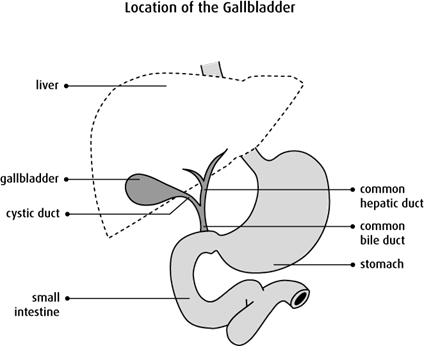What is gallbladder cancer?
Gallbladder cancer starts in the cells of the gallbladder. A cancerous (malignant) tumour is a group of cancer cells that can grow into and destroy nearby tissue. It can also spread (metastasize) to other parts of the body.
The gallbladder is part of the digestive system. It is a small, pear-shaped organ under the liver, on the right side of the body. Your liver makes bile, which is a yellow-green fluid that helps your body digest fats. The bile ducts are tubes that carry bile from the liver to the gallbladder. The gallbladder stores bile and then releases it into the small intestine. Together, the liver, gallbladder and bile ducts are called the biliary system or biliary tract.
Cells in the gallbladder sometimes change and no longer grow or behave normally. These changes may lead to non-cancerous (benign) conditions such as cholecystitis. Cholecystitis is inflammation of the gallbladder, often caused by gallstones. The changes can also lead to non-cancerous tumours such as adenomas.
But in some cases, changes to gallbladder cells can cause cancer. Most often, gallbladder cancer starts in the glandular cells in the lining of the gallbladder. These cells release substances such as mucus, enzymes or hormones. This type of cancer is called adenocarcinoma of the gallbladder. It makes up about 90% of all gallbladder cancers. Cancer can also start in thin, flat cells called squamous cells. This rare type of cancer is called squamous cell carcinoma (SCC) of the gallbladder. Other gallbladder tumours can have both glandular cells and squamous cells. These tumours are called adenosquamous carcinomas.
Other rare types of gallbladder cancer can also develop. These include sarcoma and lymphoma.

